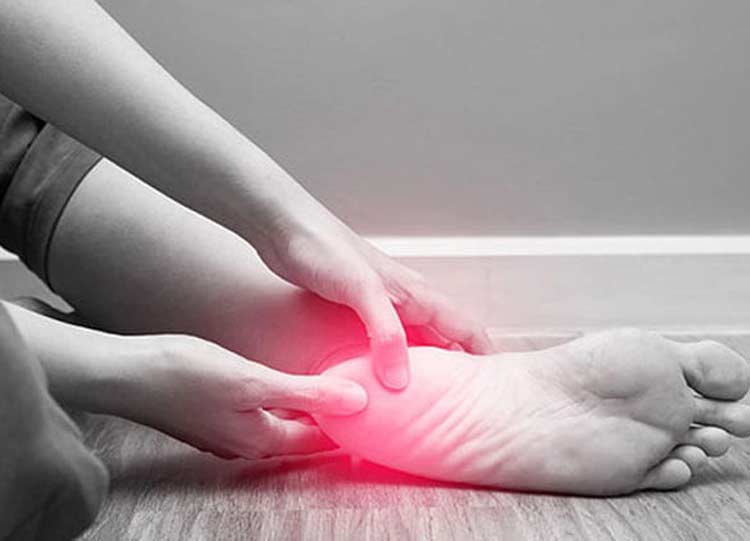
Discover how we can help you find relief from plantar fasciitis.
If your first few steps of the day are painful ones, you may have plantar fasciitis. It’s a common cause of heel pain that affects a flat, thick tissue that connects the toes and the heel bone. This ligament, called the plantar fascia, is important because it supports the arch of the foot. If this tissue becomes injured, damaged, or irritated, it will be difficult to walk or stand.
- Plantar fasciitis is more common in middle-aged individuals and athletes.
- The condition is treatable with both non-surgical and surgical options.
What Causes Plantar Fasciitis?
Straining the ligament that supports the arch of the foot is what usually causes plantar fasciitis. This may happen from repetitive motions of the foot and ankle, rolling feet inward while walking (excessive pronation), or standing, walking, or running on hard surfaces for long periods of time.
While the plantar fascia is designed to be fairly durable in terms of withstanding stress and strain from normal foot motions, too much pressure can damage or tear the thick tissues in this part of foot. The body responds to injured tissues by producing inflammation, or swelling, which is actually a protective response. However, the swelling of tissues in the foot is also what contributes to stiffness and pain in the affected foot.
Having high arches or flat feet can also increase your risk of developing plantar fasciitis. Being overweight, wearing ill-fitting or non-supportive shoes and having tight calf muscles may also contribute to the condition.


What Are the Signs of Plantar Fasciitis?
The early signs of the condition are sometimes described as more of an uncomfortable sensation of thickness in the heel rather than pain. Some people may experience discomfort that gets worse when climbing steps or when walking or standing for long periods of time. If foot pain continues when feet are at rest, the resulting pain may be due to another condition such as tarsal tunnel syndrome or arthritis.
How Is It Diagnosed?
Plantar fasciitis is initially diagnosed with an examination of the affected foot. Patients may be asked to walk to determine which movements trigger pain. Patients may also be asked about their normal activities and to discuss when symptoms are most noticeable.
Since symptoms can be similar to what’s experienced with other foot conditions affecting the same area, an X-ray may be done to rule out other issues like stress fractures. If the recommended treatments aren’t effective, additional testing that includes MRI or CT scans may be done to make a more accurate diagnosis.
Are Heel Spurs Related to Plantar Fasciitis?
It’s not unusual for patients with plantar fasciitis to have heel spurs, although heel spurs are not a cause of it. Therefore, it’s possible to treat pain related to plantar fasciitis without the need to remove heel spurs. Even so, separate treatment may be necessary if heel spurs are contributing to foot pain in a different way.
Non-Surgical Treatment Options
Rest is the first treatment often recommended for plantar fasciitis. Activity modification or taking a break from more strenuous activities until the affected ligament heals can also be an effective early treatment. For the first 3-4 days, ice can be applied to the affected area for 20 minutes at a time to reduce tissue swelling. Non-surgical treatment may also involve:
- Anti-inflammatory medications
- Calf stretches and similar foot exercises
- Cortisone injections
- Orthotics or switching to shoes that are more supportive
When Is Surgery Recommended?
If non-surgical treatments aren’t effective after 10-12 months, surgery may become an option. Procedures may include a surgical lengthening of the calf muscle (gastrocnemius recession) or plantar fascia release to relieve soft tissue tension.
Can Plantar Fasciitis Be Prevented?
The best way to prevent plantar fasciitis is to make an effort to avoid repeated foot stress. For athletes, running on smooth or softer surfaces can help reduce the ground strike impact on feet. Paying attention to proper running technique is equally important. Doing exercises to improve the strength of lower leg muscles may also be helpful in preventing plantar fasciitis.
About 2 million patients are treated for plantar fasciitis each year. The good news is that about 90 percent of the people with this common foot condition will improve within a year with simple treatments.

